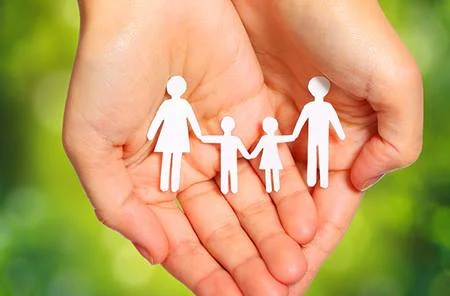Inversion: The dependency ratio in the Jewish community is higher than the dependency ratio in the Arab community
Demography, and in particular changes in the composition of the population, has far-reaching effects on social and economic changes.
A new report issued by the Arab Economic Forum reviews the demographic changes among Arabs and Jews in Israel over the past two decades, and presents their macroeconomic importance in terms of production and employment.
The dependency ratio is the ratio between the supported population and the supportive population. According to the definition of the Central Bureau of Statistics, the supported population includes children aged 0-19 and adults aged 65 and over, while the supportive population is the population of working age (20-64).
In 2019, the Jewish population’s dependency ratio was higher for the first time than the Arab population’s, and since then this gap has widened. The reason for this is a sharp and continuous decrease in the birth rate among the Arabs and an increase in the birth rate among the Jews.
These operations were reflected in the increase in the share of Arab society in the GDP and employment, which in 2019 amounted to approximately 9.5% and about 14%, respectively. The percentage of employment among Arabs increased continuously until the outbreak of the Corona crisis, and the wage gap between Arab and Jewish employees narrowed slightly and reached about 70% in 2019.
Despite the aging of the Arab community, it is still younger than the Jewish community, among other things, and due to the negative gap with the Jews in the average life expectancy that has not decreased in the past twenty years, but the average is still about 4 years for men and 3.2 years in women.
Demography report – press release
Transformation: the ratio of dependence on the Jewish population is higher than the ratio of dependence on the Arab population to demography, and in particular to changes in the composition of the population, far-reaching effects on the social and economic changes.
A new report by the Arab Economic Forum reviews the demographic changes among Arabs and Jews in Israel in the last two decades, and presents their macroeconomic significance in terms of GDP and employment.
The dependency ratio is the ratio between the supported population and the supporting population. According to the LMS definition, the supported population includes children aged 0-19 and adults aged 65 and over, while the supporting population includes the population of working age (20-64).
In 2019, the dependency ratio in the Jewish population was for the first time higher than the dependency ratio in the Arab population, and since then the gap has been widening. The reason for this is a sharp and continuous decrease in the birth rate among Arabs, alongside an increase in the birth rate among Jews.
In 2019, the dependency ratio in the Jewish population was for the first time higher than the dependency ratio in the Arab population, and since then the gap has been widening. The reason for this is a sharp and continuous decrease in the birth rate among Arabs, alongside an increase in the birth rate among Jews.
At the same time, Arab society in Israel is aging. Therefore, the decrease in the dependency ratio is expected to moderate in the coming years, and in the distant future the trend is even expected to reverse.
Despite the aging of the Arab society, it is still younger than the Jewish population. This is, among other things, due to the negative gap with the Jews in life expectancy that has not decreased in the last 20 years, and remains at about 4 years for men and 3.2 years for women

